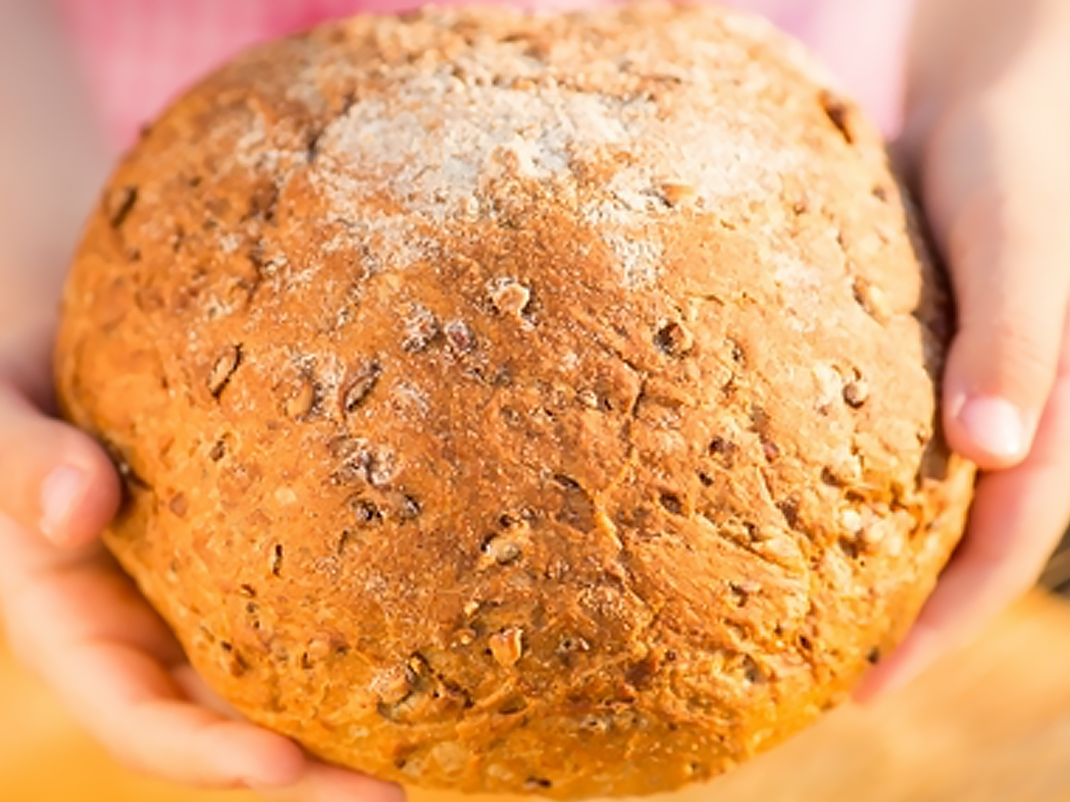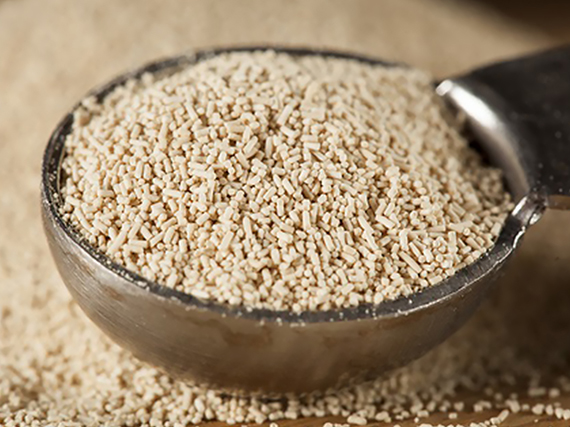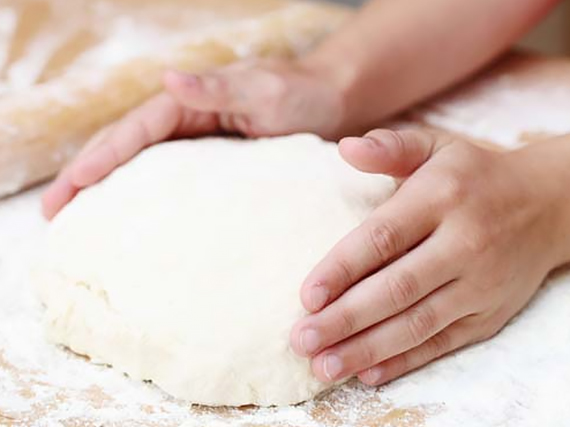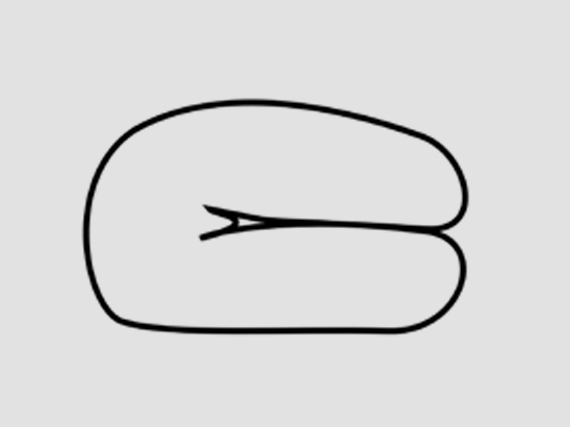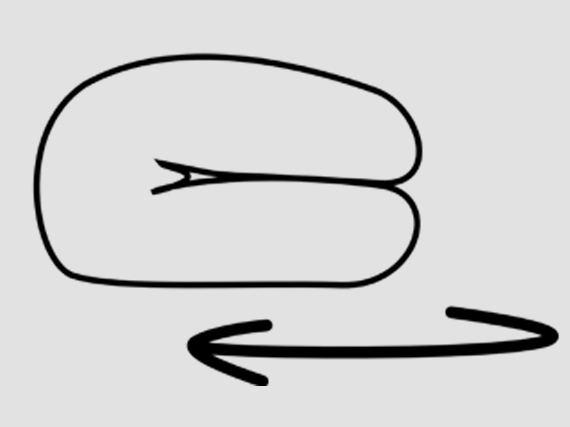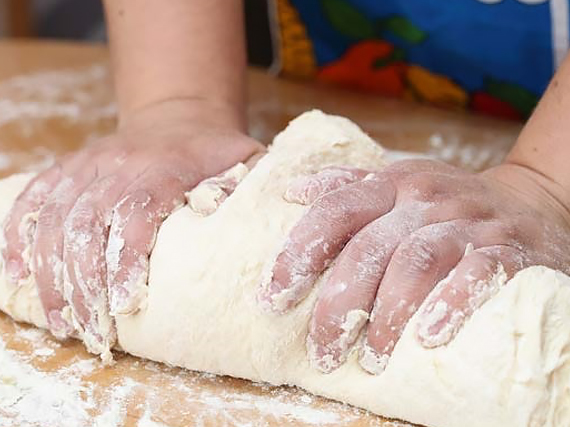Apprentice chef: Bread science
Share :
Each experiment comes with a recipe for a tasty, nutritious dish that you can enjoy with your family and friends. The secrets of cooking are yours to discover, apprentice chef!
Baker’s yeast or baking soda? – Leavening agents experiment
What makes dough rise?
Have you ever wondered what makes dough rise? The answer is leavening agents and gluten. Without these ingredients, bread and other baked products would be dense and flat, rather than light and spongy. To find out how these ingredients work in bread-making, try these experiments. Then use what you’ve learned as you make your own bread.
Experiment
In this experiment, you’ll see the differences between two leavening agents: baker’s yeast and baking soda.
Objective
This experiment will help you understand why quick-bread dough has to be baked right away, whereas bread dough made with yeast needs to rise before it’s baked.
Materials
- 2 small-mouthed, clear plastic bottles
- 2 balloons
- Timer
- Baker’s yeast
- Sugar
- Lukewarm water
- Vinegar
- Baking soda
- Measuring spoons
- Measuring cup
- Funnel
- Measuring tape
- Pen
Instructions
- Use the pen to write the word “Yeast” on one balloon. Then write “Soda” on the other one.
- Slide the opening of the Yeast balloon over the spout of the funnel. Pour 15 ml (1 tablespoon) of yeast into the top of the funnel and shake it gently until all the yeast has dropped into the balloon. Detach the balloon from the funnel and set it aside.
- Slide the opening of the Soda balloon over the spout of the funnel. Pour 15 ml (1 tablespoon) of baking soda into the top of the funnel and shake it gently until all the baking soda has dropped into the balloon. Detach the balloon from the funnel and set it aside.
- Using the funnel, pour 50 ml (¼ cup) of lukewarm water into one of the plastic bottles. Add 15 ml (1 tablespoon) of sugar and shake the bottle to dissolve the sugar.
- Carefully attach the Yeast balloon to the bottle containing the sweetened water, making sure that the contents of the balloon don’t fall into the bottle.
- Using the funnel, pour 50 ml (¼ cup) of vinegar into the other plastic bottle.
- Carefully attach the Soda balloon to the bottle containing the vinegar, making sure that the contents of the balloon don’t fall into the bottle.
- Start the timer.
- Now carefully angle the balloons to pour their contents into the liquid in the bottles. Watch what happens.
Please see the printable PDFs at the bottom of the page:
Banana bread
Please see the printable PDF at the bottom of the page: Banana bread.
Making a gluten ball: Wheat flour experiment
Did you know that only bread made from wheat flour is light and spongy? This is because wheat flour contains the proteins glutenin and gliadin, which, when mixed with water, form “gluten chains.” Gluten can stretch and return to its original shape, like an elastic. The tiny air pockets that you see in a slice of bread are made by carbon dioxide gas that’s been trapped by the gluten in the dough. Without the gluten chains, the gas would escape and the bread would be dense and flat.
Allergy warning!
Do not conduct this experiment if you are allergic to wheat.
Experiment
In this experiment, you’ll “wash” wheat flour, to change the proteins in the bread dough into gluten chains.
Objective
This experiment will help you understand how gluten chains function in bread-making.
Materials
- All-purpose flour
- Water
- Measuring spoons
- Bowl or small bucket
- Different types of flour
Instructions
- Mix 30 ml (2 tablespoons) of lukewarm water with 60 ml (4 tablespoons) of all-purpose flour. Use your hands to form a ball of dough.
- Fill the bowl or small bucket with cold water and put the ball in it. Let it rest for 30 minutes, then replace the water with cool fresh water.
- Squeeze and gently rub the dough ball under water until it’s no longer sticky or pasty.
- Knead the “washed” dough.
Don’t taste the “washed” dough. Raw flour may contain bacteria that could make you sick.
Please see the printable PDF at the bottom of the page: Observations.
Now you know
When wheat flour is mixed with water, two proteins, glutenin and gliadin, form a pliable, elastic mass called gluten. Gluten chains trap the carbon dioxide gas that’s produced by yeast. This process is what allows bread dough made with wheat flour to rise higher and produce bread that’s light and spongy. Gliadin molecules look like balls of tangled wool; glutenin molecules look like springs. When combined and mixed with water, these two proteins join together and absorb twice their weight in water (because the water molecules are trapped between the proteins). As dough is kneaded, the matted gluten chains untangle, lengthen and align themselves, to produce interlocking layers of gluten.
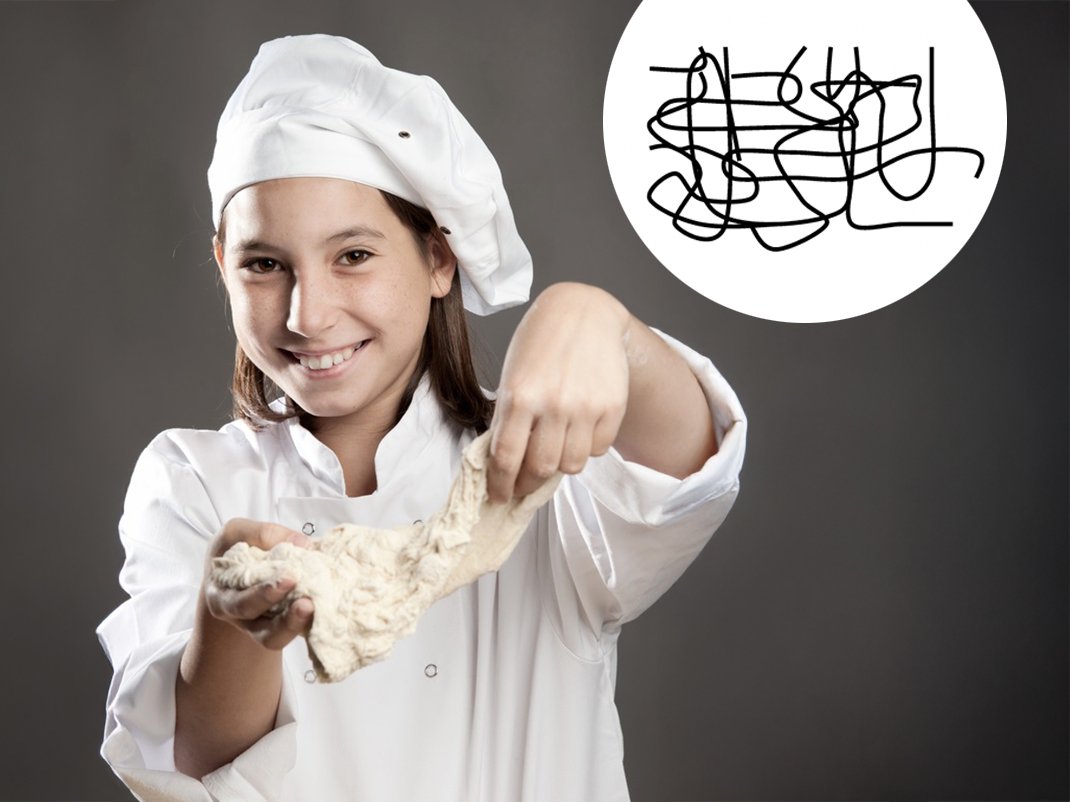
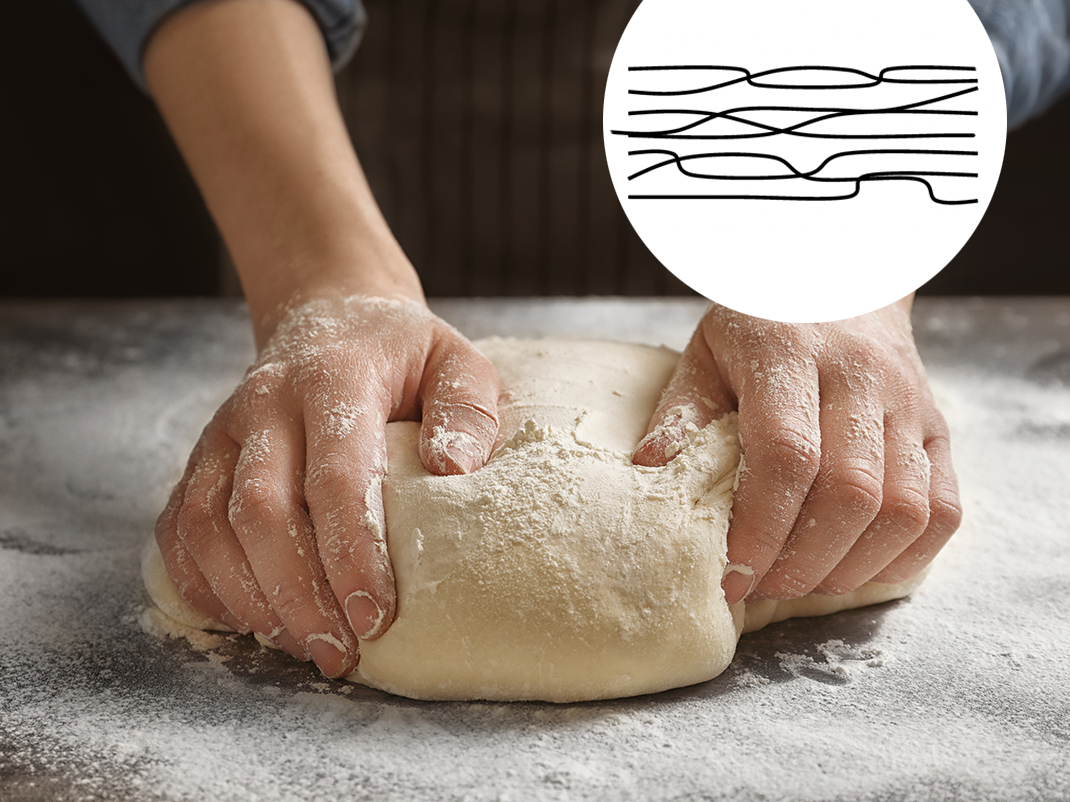
The dough then becomes pliable and elastic. It changes shape under pressure, but returns to its original shape when pressure is removed.
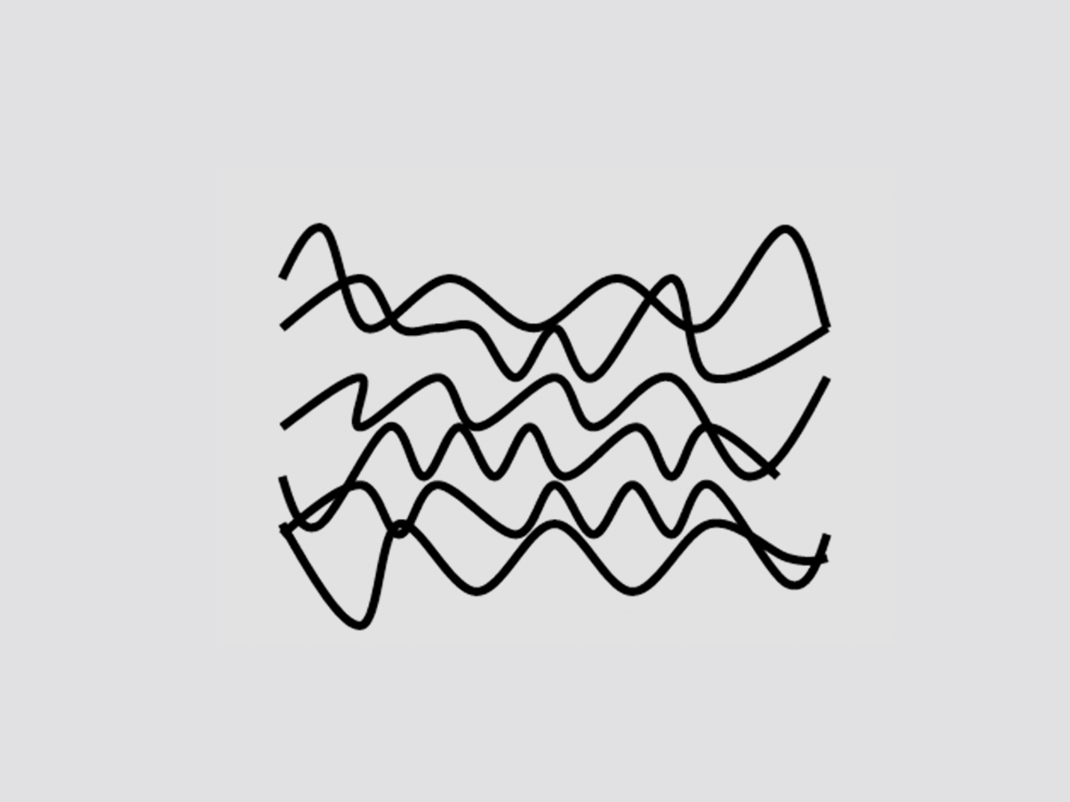
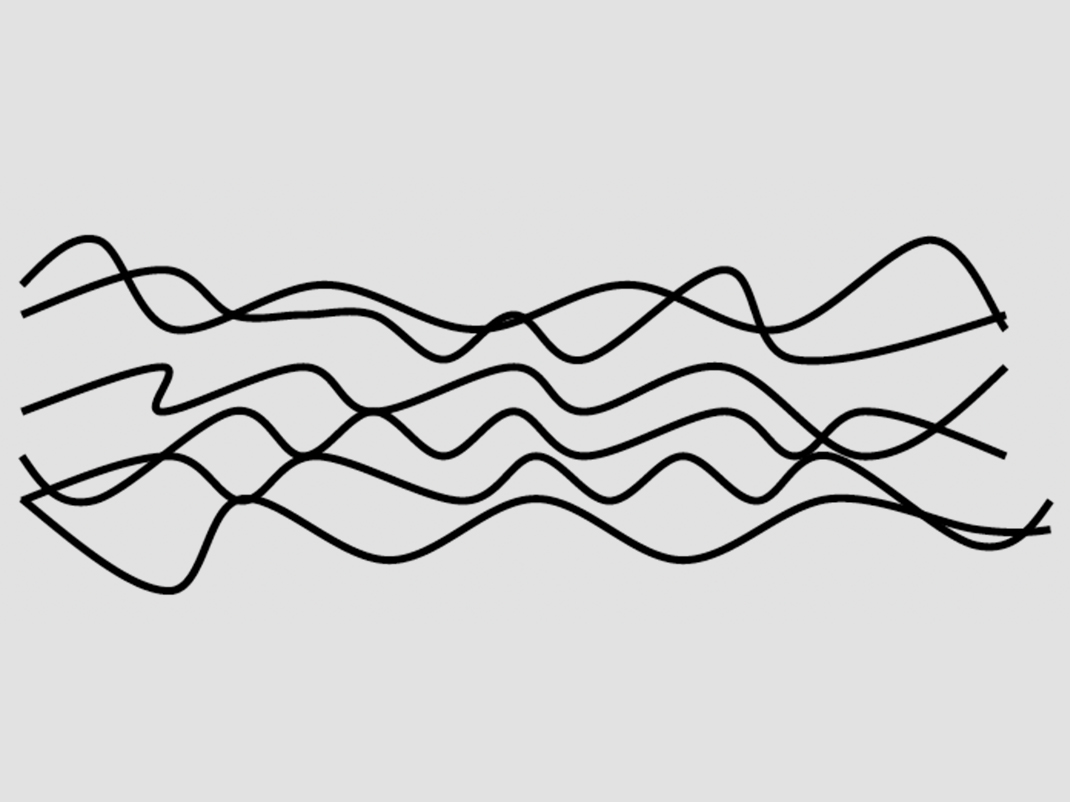

These characteristics allow bread dough made with wheat flour to expand and trap the carbon dioxide gas produced by yeast, while making the dough sturdy enough that it won’t tear under the pressure from the gas. Wheat flour is unique. It is the only type of flour with sufficient gliadin and glutenin to form enough gluten chains to produce bread that’s light and spongy.
Recipe: Pizza Crust
Materials
- 1 cup lukewarm water
- 1 package Yeast
- 5 ml (1 teaspoon) Sugar
- 5 ml (1 teaspoon) Salt
- 30 ml (2 tablespoons) extra virgin olive oil or canola oil
- 2 cloves garlic, minced
- 5 ml (1 teaspoon) dried basil
- 5 ml (1 teaspoon) dried oregano
- 500 to 750 ml (2 to 3 cups) whole wheat flour
- olive oil
Instructions
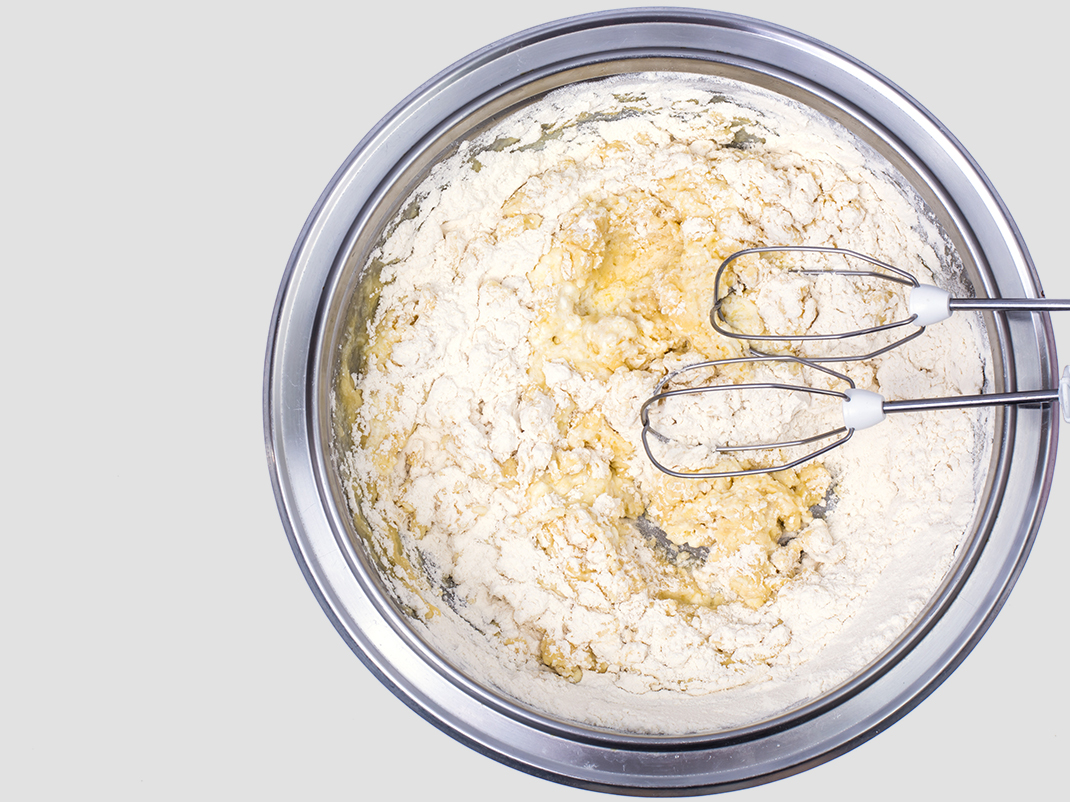
Preheat the oven to 190°C (375°F). In the large bowl, dissolve the yeast and sugar in the lukewarm water. The water should be around bath temperature, that is, between 37°C and 43°C (100°F and 110°F). Let the mixture sit for 5 minutes. Add the salt, oil, garlic and herbs. Mix gently. Gradually add the flour. Mix well after each addition until all liquid is absorbed. The dough should not stick to your fingers or the sides of the bowl.
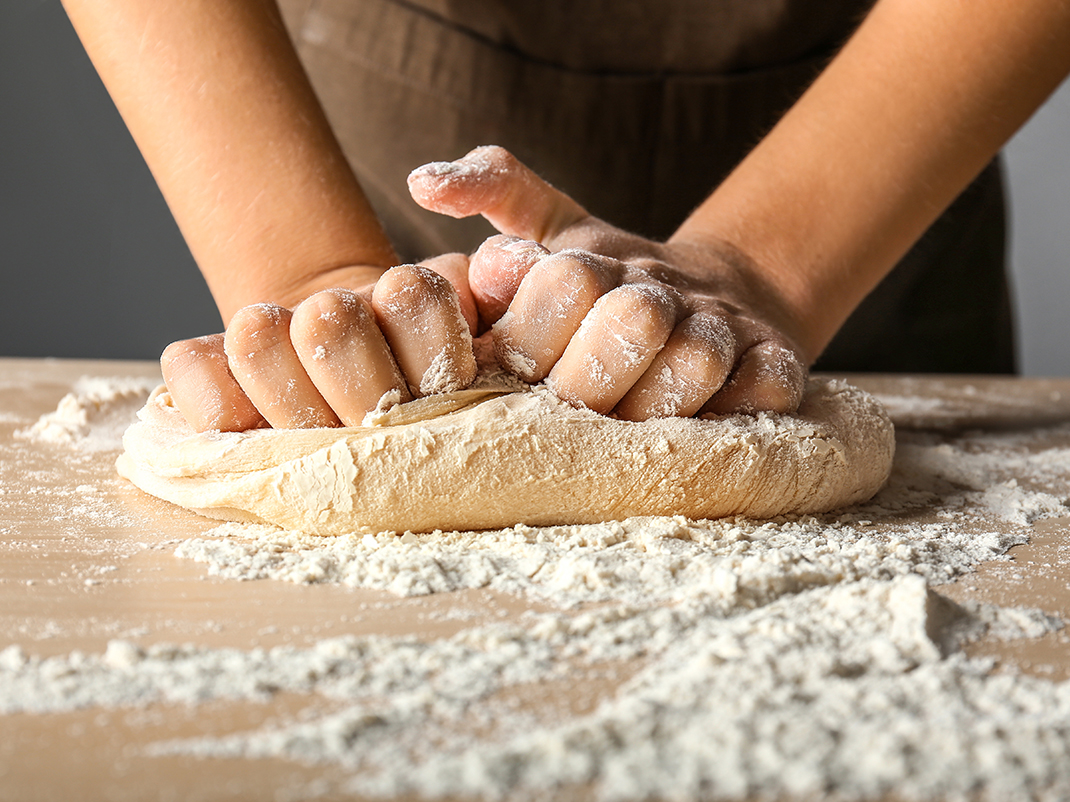
On a lightly floured work surface (sprinkle 2 or 3 tablespoons of flour on the counter), knead the dough for 3 to 4 minutes or until it is smooth and even-textured. If the dough seems sticky, add a little flour. See Appendix A for instructions on how to knead. Let the dough sit for 5 to 10 minutes. Don’t eat the uncooked pizza dough. Uncooked flour may contain bacteria that could make you sick.
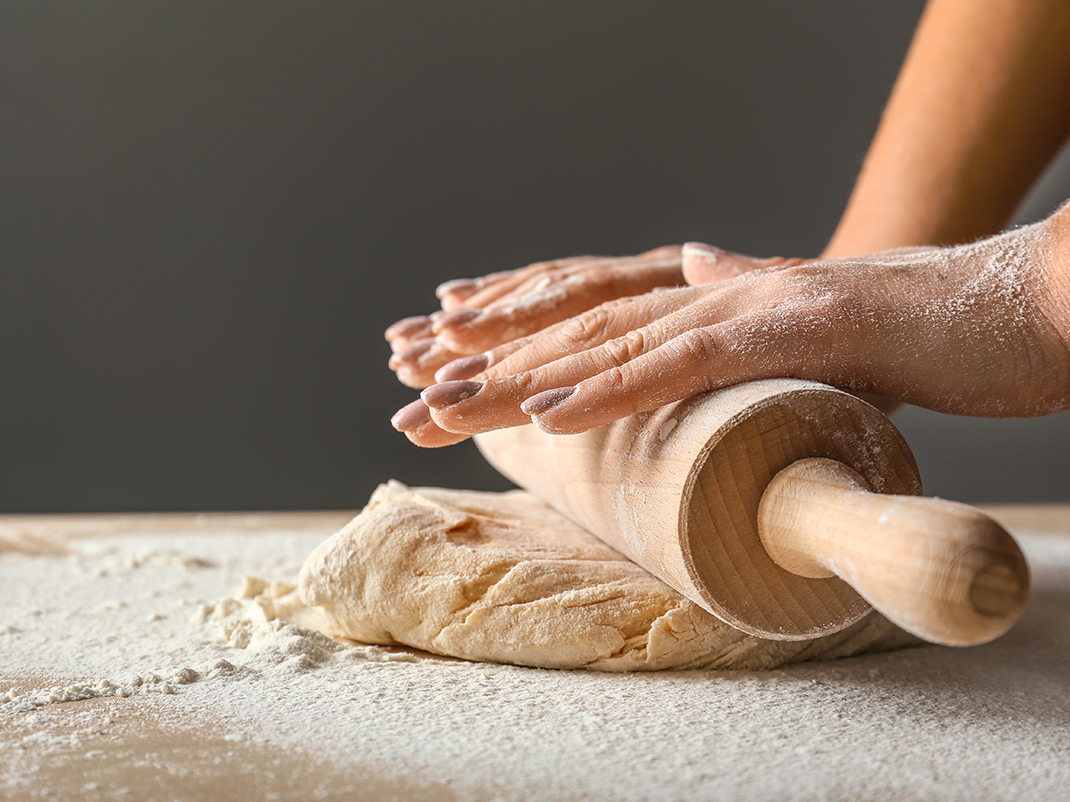
Flour a rolling pin (rub a little flour on it).
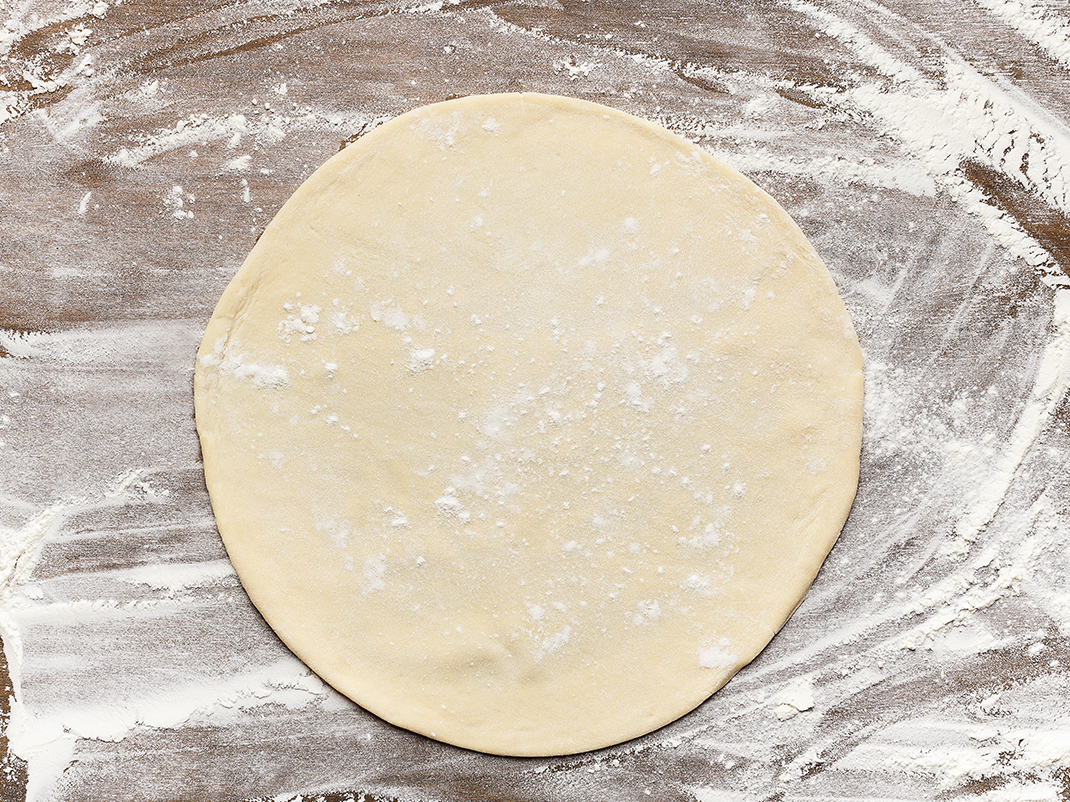
On a lightly floured work surface, carefully roll out the dough until it is shaped the way you want it. If necessary, sprinkle a little more flour on the work surface to prevent the dough from sticking.

Line the pizza pan or cookie sheet with parchment paper to prevent the dough from sticking. Place the dough on the pan. Using a baker’s brush, lightly brush the dough with olive oil.
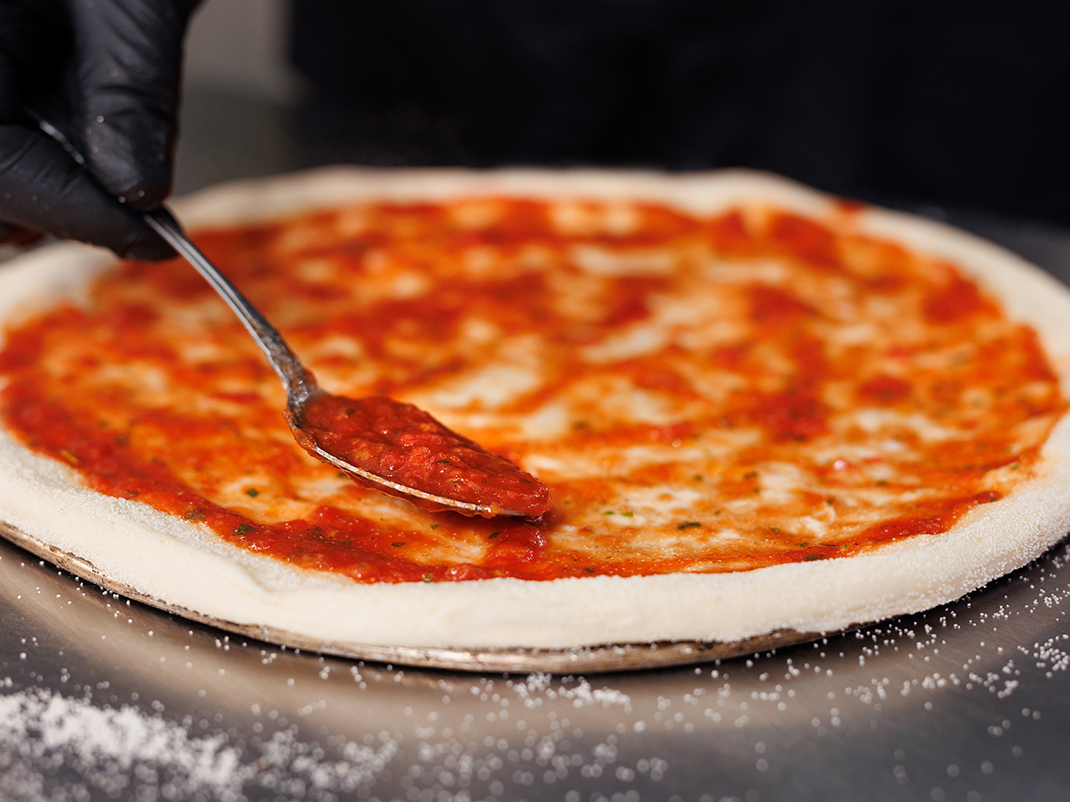
Add your favourite pizza toppings. Bake the pizza for 20 to 25 minutes.
How to knead bread dough
Follow these instructions to learn how to knead bread dough. Be careful not to stick your fingers into the dough, because they will be very difficult to clean off. At first, your dough will seem like a sticky mess. But as you knead, the gliadin and glutenin will absorb more of the water in the dough, and it will stick less and less. Try not to add too much flour to the dough while kneading so that it remains as smooth and elastic as possible. Never taste or eat raw dough. Uncooked flour may contain bacteria that could make you sick.
- Get ready
Take off any jewelry you’re wearing such as rings, watches and bracelets. Pull up your sleeves and wash your hands.
- Prepare the dough ball
Turn the bowl over on top of a floured surface so that the dough falls out.
Keeping your hands flat, gather the pieces of wet dough to form a ball. Press down on the ball and reshape it until all the pieces of dough stay stuck together. If the dough is too sticky, you can dust it with a little bit of flour.
- Start kneading
Press down on the ball with the palm of your hand (a) while pushing forward to flatten and stretch the dough (b).
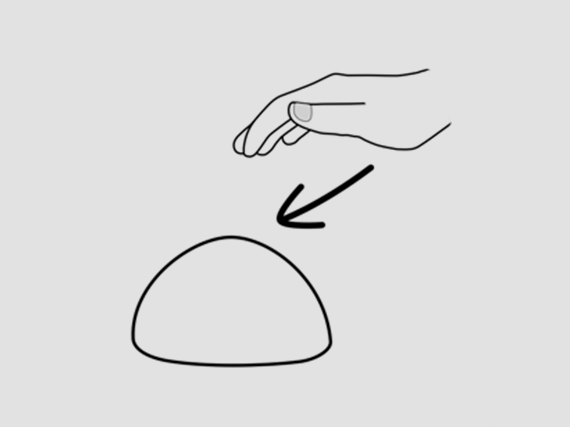

Grab the edge of the flattened dough and fold it back on itself.
Repeat 3 or 4 times.
- Rotate the dough.
The ball should now look more like a long roll.
You must now fold that roll on itself (a) and turn it 90 degrees on your work surface (b).
- End
Repeat steps 3 and 4 until the dough is smooth and elastic, for about 10 minutes. The final texture should resemble that of your ear lobe.Make a ball with the dough and place it in an oiled bowl. Cover the bowl with a damp cloth to prevent the dough from drying out while it is proofing.
Printable PDFs
- Observations and questions (PDF, 211 KB)
- Leavening agents experiment answer sheet (PDF, 193 KB)
- Banana bread (PDF, 214 KB)
- Observations (PDF, 200 KB)
- Pizza crust (PDF, 217 KB)
Be food safe and allergy aware! Visit Health Canada’s website to learn more about food safety and food allergies.
You may also be interested in
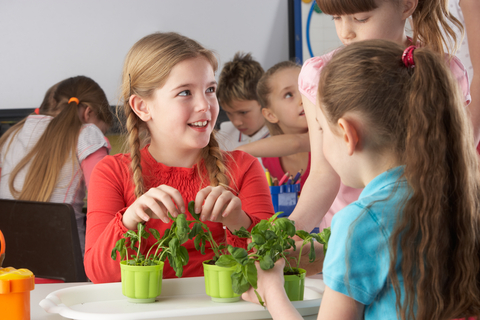
Apprentice chef: Sprouting experiments
Discover how fruits and vegetables support your health while learning to regrow plants from scraps and create delicious recipes in these fun experiments!
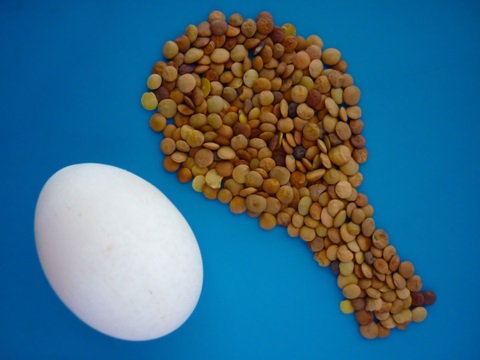
Apprentice chef: Mighty proteins
Learn about proteins and their role in your body through fun experiments with eggs and pulses. Discover how protein-rich foods help you stay strong and healthy!
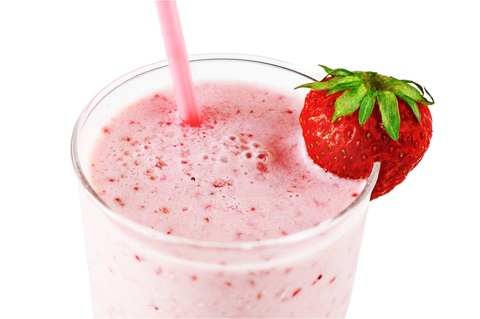
Apprentice chef: The ferment wars
Your digestive system is full of “good” bacteria that aid digestion and boost health. Try a fun experiment and make a probiotic smoothie packed with live bacteria!
